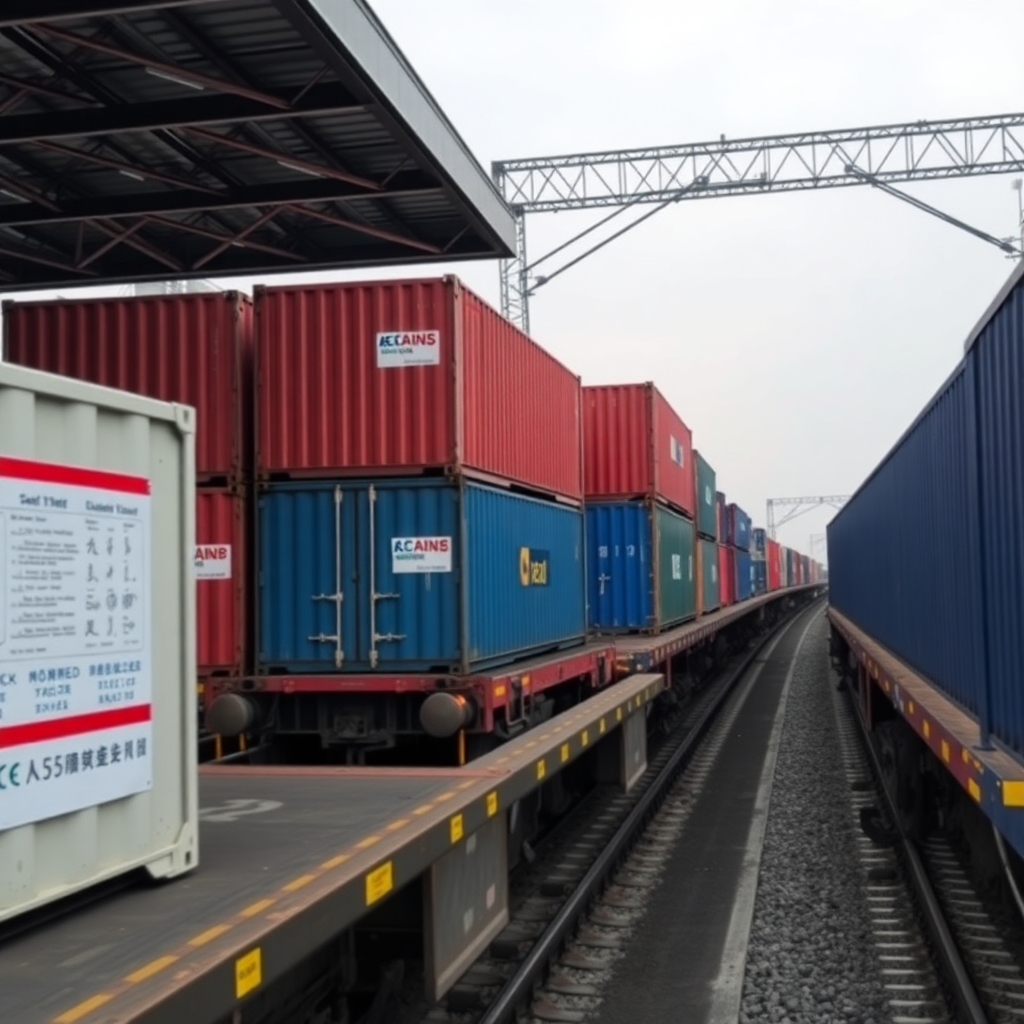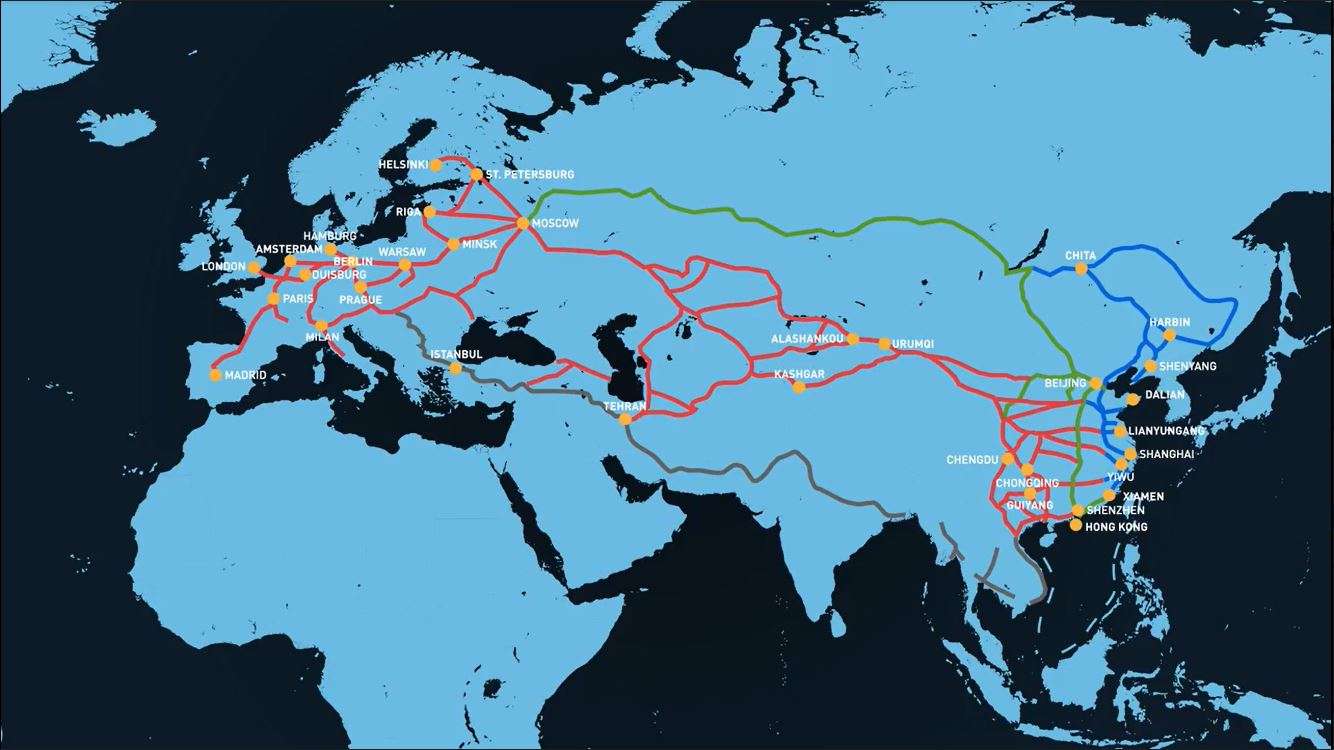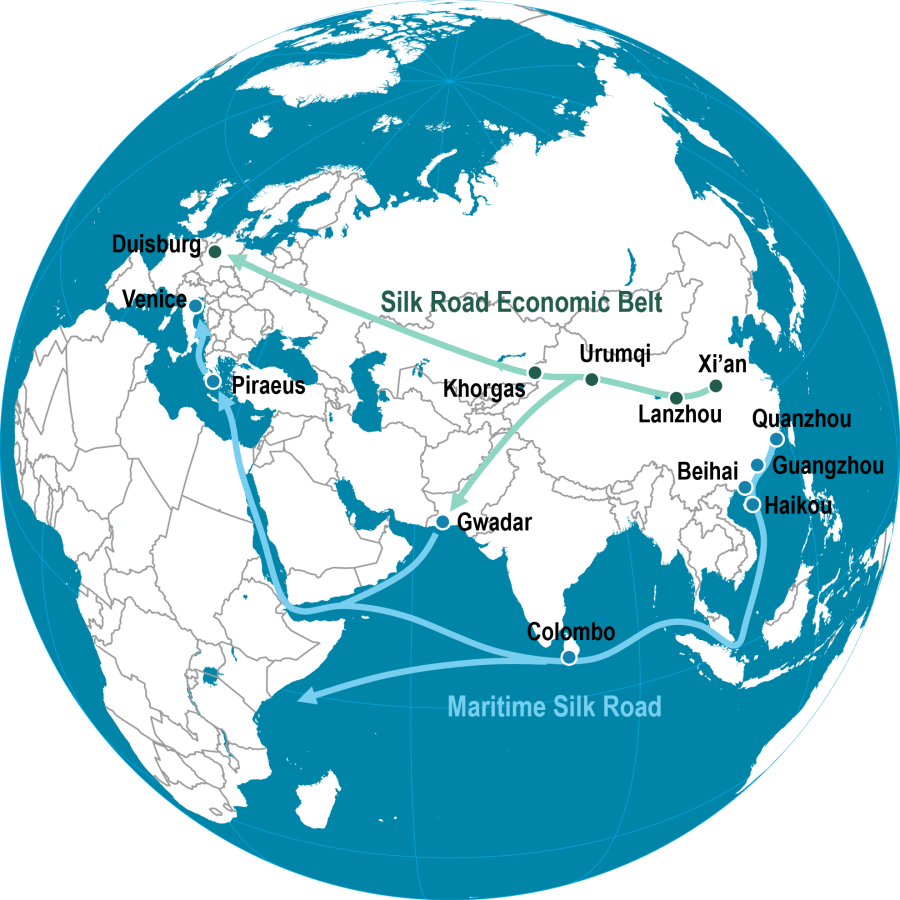The New Silk Road, also known as the Belt and Road Initiative (BRI), is a vast trade and infrastructure project led by China. It aims to strengthen economic ties across Eurasia by linking Chinese industrial zones to European consumption markets via land and sea corridors.
Rail freight plays a central role in this strategy. Launched in 2011, the China–Europe railway network now spans over 12,000 kilometers, connecting more than 15 Chinese cities to major European destinations such as Duisburg, Hamburg, Lyon, Madrid, and London.
This intercontinental railway reduces reliance on maritime routes and shortens delivery times significantly. With regular departures, fixed schedules, and multimodal logistics hubs, it supports time-sensitive cargo, including automotive components, consumer electronics, and industrial equipment.
The routes pass through Kazakhstan, Russia, Belarus and Poland before reaching Western Europe. Transcontinental rail now complements traditional ocean freight, creating a resilient alternative in global supply chains—especially during disruptions such as port congestion or geopolitical instability.




